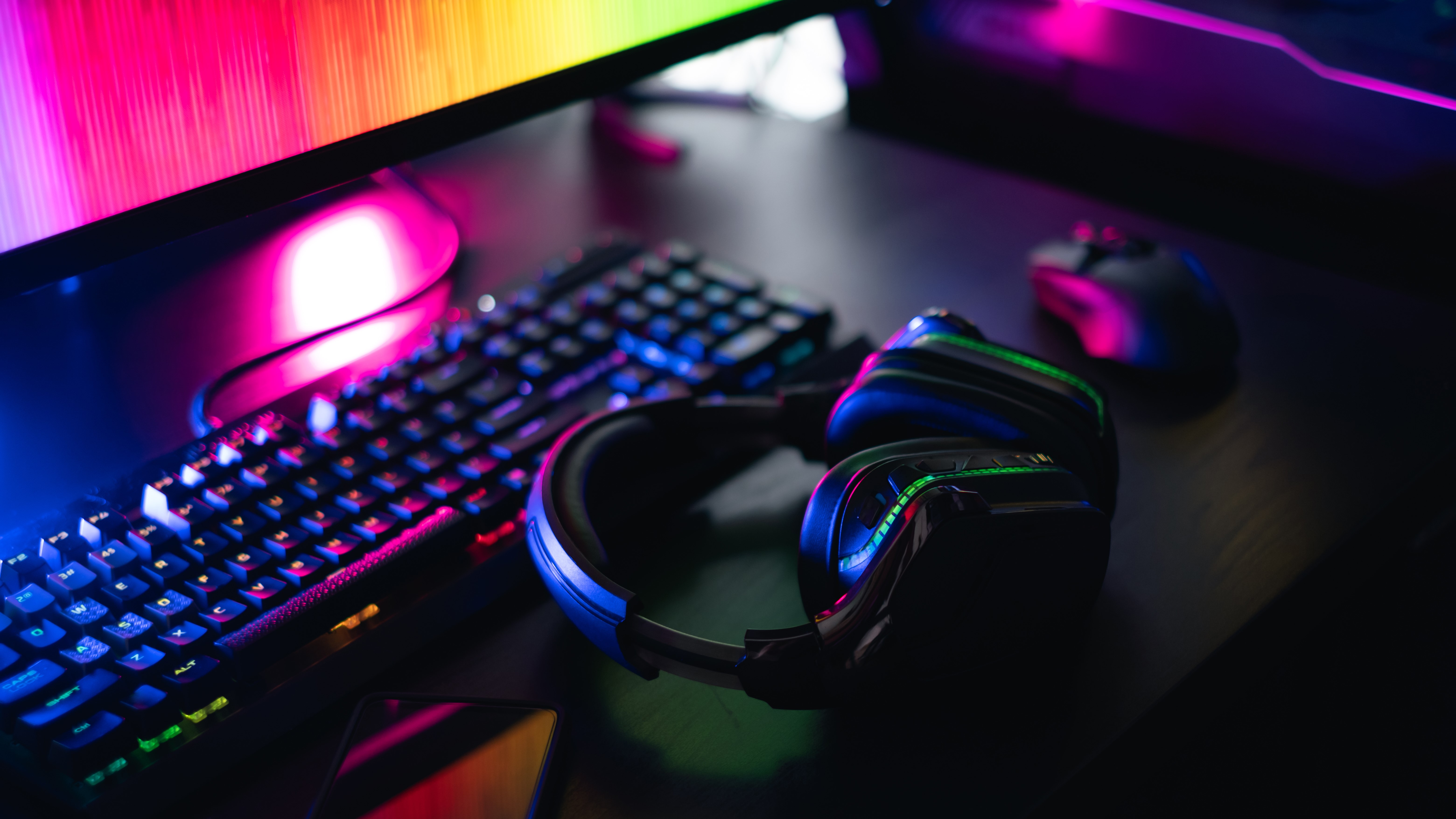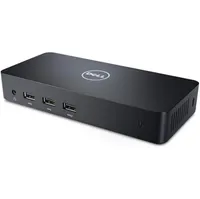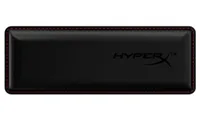9 Peripherals and Accessories Your New Laptop or Desktop Needs to Fly
From monitors to docking stations, these will make your desktop setup.

You just bought or were gifted a new PC and you've set up that new laptop or desktop by changing Windows 11's worst default settings. Now your computer can surf the web, run productivity apps or even play games to the best of its ability.
However, for you to have the best possible experience at home and on the road (if it's a laptop), you could use some additional gear. These are the must-have PC add-ons and accessories I would buy to go with a new system.
High-Res, High Quality Monitor
If you bought a desktop, I'm going to presume you also bought an external monitor or had one already. But if you bought a laptop or your desktop monitor is an old one, you really should treat yourself to a high-quality, high-res external display or perhaps even two of them.
In my house, I have four monitors for my desktop PC and, frankly, I wish I had six. It's good to be able to see a lot of content at once and to have a different window or pair of windows on each display. If you have a laptop and you use it at a desk sometimes, you need a monitor so you don't have to look at the tiny 13, 14 or 15-inch display.
You should get displays that match your main use case: productivity or gaming. If you're gaming, I recommend a 2K display (2560 x 1440) with a 165 Hz or higher refresh rate. If you're doing productivity, you don't need a high refresh rate, but going for a 4K panel is ideal.
Dell S3222DGM (2560 x 1440, 165 Hz): now $279 at Dell (was $349)
This curved, 32-inch monitor offers the perfect balance between affordability and performance with an incredible contrast ration, great build quality and blur-free gaming. It's our favorite gaming monitor of all.
DellS S27121QS, 27-inch 4K Monitor: now $296 at Amazon (was $329)
This 4K, 27-inch monitor has strong build quality, a very bright panel (392 nits on our tests) and coverage of 114 percent of the sRGB gamut.
Mechanical Keyboard
If you're using the keyboard that came in the box with your desktop PC, please stop now. If you're using your laptop's keyboard, you can do better, even if the typing experience is relatively good (for a laptop). What you need is a high-quality mechanical keyboard with either clicky, linear or tactile switches.
I prefer keyboards with clicky switches, which are great for typing and give you audible feedback. Switches are color-coded so these are usually labeled as blue or sometimes (my favorite) Kailh Box White. For those who like feedback, but are self-conscious about a little pleasant noise, tactile switches, which are usually color-coded as brown, will do the trick. Finally, gamers who just want keys that have no resistance so they can hit "fire" more quickly, will prefer linear switches, which are usually color-coded as red.
Get Tom's Hardware's best news and in-depth reviews, straight to your inbox.
You might be surprised to learn that you can get a decent mechanical keyboard for less than $60 or a really good one for less than $100. Here are a couple of suggestions.
Redragon K596 Pro RGB Keyboard: now $50 at Amazon (was $54)
This tenkeyless (no numpad) keyboard is available in either wired or wireless configurations with either brown or red switches. Use the coupon button to get it at this price.
Hexgears GK735 Mechanical Gaming Keyboard: now $72 at Amazon (was $79)
This wired, full-size keyboard has Kailh Box White switches, the best clicky switches around, along with a nice RGB ring light around the outside of the keyboard.
Productivity or Gaming Mouse
You touch the keys on your keyboard thousands of times per day and you click the mouse button and roll the mouse pointer a lot too. So having a great mouse is imperative. Even if you like the touchpad (or TrackPoint) on your laptop, a mouse offers a far better navigation experience when you're at your desk.
As with your monitor choice, you need to decide whether you're prioritizing productivity or gaming when you choose a mouse. While you can go with a wired mouse, I always prefer wireless.
Logitech MX Master 3S: now $92 at Best Buy (was $99)
The ultimate productivity mouse, the MX Master 3S has a multitude of customizable buttons, a thumb wheel, a magnetic scroll wheel that toggles between smooth and ratcheted modes and the ability to switch among three different wireless profiles.
Redragon M686 Wireless Gaming Mouse: now $42 at Amazon
This budget-oriented, wireless gaming mouse has an attractive RGB light show and 16,000 DPI resolution.
Laptop Bag
If you got a new laptop, you need some way to carry it around with without damaging it. You can go for a very slim bag that doesn't take up a lot of space and is easy to carry or a slightly-large one which holds more things in addition to your computer.
I like these two bags.
SwissGear 5977 ScanSmart Laptop Backpack: now $83 at Amazon (was $89)
This bag can accommodate up to a 17-inch laptop, along with a tablet and lots of other gear. I like it because it's comfortable to carry, high-quality and has a ton of room for other things; I can usually even fit two laptops in it. I got mine in blue, but the black model is cheaper.
eBags Pro Slim Laptop Backpack: now $60 at Amazon (was $60)
This super-slim backpack has a protective padded pocket and some extra space for added gear such as chargers. It won't hold a second laptop or a giant gaming laptop, but it's flat on the back rather than bulging out, a rare feature.
External Webcam
Most laptops come with some kind of webcam, but usually not an excellent one. Also, if you're using your system at a desk -- whether it's a desktop or not -- you want a webcam that can sit on top of your monitor for video calls.
Whether you're just making video calls for work or moonlighting as an online influencer or game streamer, you need a webcam that has at least 1080p resolution and good image quality. Here's our favorite choice.
Logitech Brio 501: now $99 at Amazon
Our favorite webcam for most people, the Brio 501 has a whopping 90-degree field of view and, in our tests, provided excellent low-light performance and auto exposure.
Laptop Docking Station
If you're using a laptop with a monitor, keyboard and mouse, you don't want to have to connect it separately to each of those devices every time you bring the laptop home. That's where a docking station comes in. You connect all your monitors and peripherals to the dock and then run just one wire to the laptop. If your laptop can charge over USB-C, you can get a dock which powers the computer and transfers data over a single cable.
When choosing a docking station, make sure you get one that supports the number of monitors you want to use with it. Some support just one monitor, most support two and there are a few more expensive ones that support three or perhaps even four outputs.
Also, make sure the dock uses the kind of connection your laptop supports. If it's a Thunderbolt dock and your laptop doesn't have Thunderbolt, don't buy it. Here are a couple of recommendations.
Plugable 14-in-1 USB-C and Thunderbolt Dock: now $199 at Amazon
This Thunderbolt docking station provides up to 96W of charging power for a Thunderbolt laptop. It outputs to up to two monitors that can each be either HDMI or DisplayPort.
Dell D3100 3x 4K USB Dock: now $129 at Amazon (was $129)
This docking station supports up to three displays, one of which can be up to 4K resolution. Best of all, it uses DisplayLink technology which allows it to connect to a standard USB 3.0 port on any laptop. It doesn't charge your laptop, however.
Power Tower
Whether you have a laptop or desktop, you need lots of outlets at your desk. Yes, you could buy a traditional, horizontal power strip. But those strips either take up a ton of desk space or you put them on the floor where they are out of reach.
What you need it a power tower, a vertical power strip that takes up a minimal footprint on your desk and allows you to plug in 12 or more devices, perhaps while charging others via USB. Some power towers even allow you to cut power to different sets of outlets with the touch of a button so you can turn off the electricity to your monitors and desktop when they are off while still charging your laptop or running your NAS on other outlets.
SMALLRT 12-outlet Power Tower: now $21 at Amazon (was $33)
This power tower has 12 outlets with an on / off toggle on each set of three. There's also three USB Type-A and one USB-C charging port.
Wrist Rest
After you get your mechanical keyboard, you need a wrist rest to help keep you comfortable as you type. Yes, some keyboards come with their own wrist rests, but there's only one wrist rest that gives you the comfort you need: the simply-titled HyperX Wrist Rest.
HyperX Wrist Rest: now $19 at Amazon
Your wrists will thank you for spending $15-$20 on HyperX's gel and foam wrist rest. And with several sizes, you don't need to use one that's bigger than your keyboard anymore.
Mouse Pad / Mouse Mat
You got your mouse but it's really unpleasant to drag it around on a rough surface like the top of your desk (especially if the desk is glass). It almost goes without saying, but you need a good mouse pad.
Some folks prefer a giant mouse surface which is huge and covers a large portion of their desk, perhaps with RGB. For myself, I go with a simple choice: a Belkin wrist rest that has a gel wrist rest built into it.
Belkin WaveRest Gel Mouse Pad: now $8 at Amazon
This relatively-compact mousepad is rather plain looking but it has a super-comfy gel wrist rest built right in.
Razer Goliathus Extended Chroma Gaming Mousepad: now $59 at Amazon
This 36-inch wide pad is more than large enough go under your keyboard and your mouse at the same time. It also has RGB lighting that you can control via Razer's Chroma software.
Avram Piltch is Managing Editor: Special Projects. When he's not playing with the latest gadgets at work or putting on VR helmets at trade shows, you'll find him rooting his phone, taking apart his PC, or coding plugins. With his technical knowledge and passion for testing, Avram developed many real-world benchmarks, including our laptop battery test.
-
hotaru251 i'll say starts out as an ok list, but then after midway the list isnt "needs" but nice to haves.Reply -
DavidLejdar Yesterday, in a sale I ordered me a Pico4 (VR headset). Not a peripheral per se, but it will be connected to my desktop PC.Reply
Not sure if I will also get me a Wifi 6 router for it. Using a cable will be cheaper, and it can charge it a bit (instead of likely also needing a powerbank if I would use it completely wireless). And not sure if Wifi 6 would practically be achieving a higher transfer rate than cable, even though Pico4 does only USB (whereas a Pico3 model did DisplayPort). So I may as well wait for Wifi 7 in any case.
And tempted to get me an additional monitor (currently with a Samsung G5 model, 27-inch 1440, 144Hz, which I rarely max out with my current GPU and ultra settings). I suppose having two curved screens next to each other isn't that bad if one of them is a bit turned. And the 32-inch one would seem nice (i.e. for city builder games). But that is without HDR and it is only 8-bit, isn't it? I suppose I will sit that one out.
Mind you, I would argue to my employer, that for my HO work setup, a docking station supporting three displays, that such is clearly a must have. :) Currently having only two monitors in HO (in the office 4). And in that context, what is missing in this article is some option for wall holder or such, as the horizontal space here is limited.hotaru251 said:i'll say starts out as an ok list, but then after midway the list isnt "needs" but nice to haves.
And with all that stuff in my desk corner, I could totally use a power tower. Local retailers don't have that here (Berlin) at all though - offering at best a "power cube". But Temu does offer one, including USB slots. -
chaz_music Good list, and it matches what I typically use for my setup.Reply
One thing that I wanted to pass along was about the power strip, which is a similar problems that I find over and over. There are so many of these kind of products found on Amazon, Newegg, Walmart, Aliexpress, Temu, and other websites that don't attempt to sell items that comply with safety marked products. For the US, that would be a product with a UL / ETL mark, or in Europe, a product should have a CE mark.
If it plugs into the utility/mains, it is very important to make sure it has those safety marks to verify that it has been independently checked for fire and shock hazards. Much of my career as a consultant has been spent identifying why certain products have caused fires or caused a shock, and it usually comes from engineers who are inexperienced on how and why these standards are necessary.
So on this product, I would be checking these:
1. The MOVs (surge protectors) are safe and self fused, since they tend to catch on fire all by themselves. MOVs leakage current goes way up after a certain number of hits or a single severe hit, and can result in fire when the leakage current causes thermal runaway. MOV devices have burned down buildings before. For me personally, I often just remove the near useless 10-12mm disc size from my outlet strips when I buy them and rely on the surge device I installed in my breaker panel, which is rated for 50KA (single shot) and is thermally fused for when the device reaches end of life. I have been designing with these for over 30 years.
2. That the voltage spacings meet the minimums for user safety per UL/CE.
3. Check that the USB power chargers have the right spacings and insulation systems in place to protect the user (think: SMPS XFMR, isolation). There are countless stories of people in Asia being electrocuted by these kinds of bad designs. One of the first I remeber was a woman in Hong Kong who was killed by her charger, but the media latched onto that it was her iPhone. It wasn't the phone - it was her off brand charger that she bought.
4. If there is a heat build up, is the housing made of self extinguishing plastic? In the UL standards, that would be 94V0 rated plastic. Many CE standards are harmonized with UL on this or have similar ratings.
With online purchasing options becoming the "wild west" of commerce, it is often best to use good judgement when buying things that the old brick and mortar stores used to protect us from poor designs.
Again - if it plugs into an outlet to operate, make sure it has a UL and CE mark. -
Alvar "Miles" Udell Again with that "power tower" from a questionable brand that appears on most every list of things people should buy...Reply -
Sleepy_Hollowed I know for gaming it does not matter that much (as one hand is usually on the mouse), but if you play and work on the same machine, consider recommending ergonomic keyboards, they're great at preventing injuries or making existing ones manageable.Reply
Nice list otherwise.















